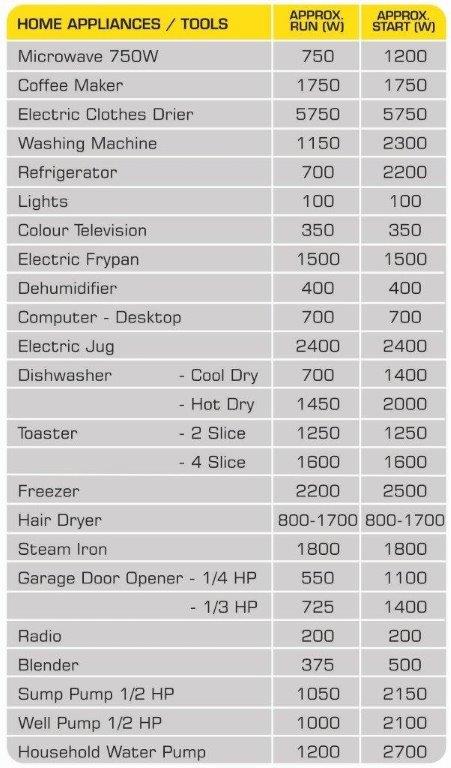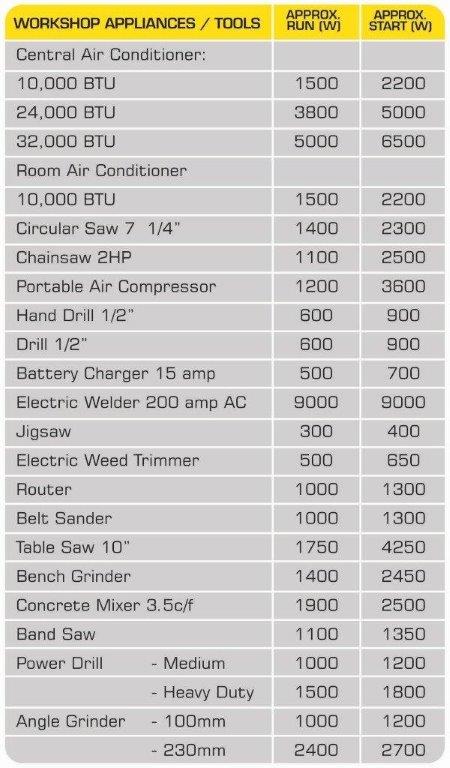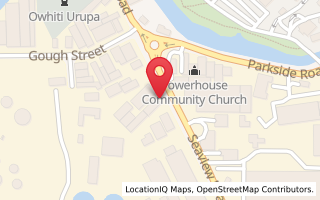
Choosing a generator
It’s easy to feel left in the dark when it comes to knowing what to look for when selecting a generator. The selection guide below will enable you to make the correct decision.
Traditional Portable Generator
Traditional portable generators produce power by using an engine to rotate two large coils of wire (the rotor) inside a circumference of magnets (the stator). Each full rotation of the engine produces one complete sine wave of AC power. Therefore the engine must maintain a constant speed of 3000RPM to produce the standard of 50Hz. (3000 revs / 60 seconds (1min) = 50Hz). No matter what the load, a traditional style generator must run at full speed to provide the correct power.
Traditional portable generators produce power by using an engine to rotate two large coils of wire (the rotor) inside a circumference of magnets (the stator). Each full rotation of the engine produces one complete sine wave of AC power. Therefore the engine must maintain a constant speed of 3000RPM to produce the standard of 50Hz. (3000 revs / 60 seconds (1min) = 50Hz). No matter what the load, a traditional style generator must run at full speed to provide the correct power.
Inverter Generator
An Inverter Generator is normally used where power is required for sensitive electronic equipment like PCs, TVs and instrumentation. They are also chosen when portability or size is important and where noise must be kept to a minimum.
An Inverter Generator is normally used where power is required for sensitive electronic equipment like PCs, TVs and instrumentation. They are also chosen when portability or size is important and where noise must be kept to a minimum.
Portable Generator
A portable generator consists of two main components, a gasoline or diesel powered engine and an alternator. The alternator consists of a rotor (rotating) inside a stator (fixed).
The engine power is used to rotate the rotor inside the stator which generates AC power. Portable generators have many applications at work and around the home and have made outdoor events and projects much easier to tackle.
A portable generator consists of two main components, a gasoline or diesel powered engine and an alternator. The alternator consists of a rotor (rotating) inside a stator (fixed).
The engine power is used to rotate the rotor inside the stator which generates AC power. Portable generators have many applications at work and around the home and have made outdoor events and projects much easier to tackle.
The GT POWER Range of generators take this convenience and portability to another level with the latest technology and functions.
What do you need to power?
The first question when selecting a generator is “What do you need to power?”
The first question when selecting a generator is “What do you need to power?”
Make a list
Make a list of the appliances, tools and lighting that you want to use simultaneously. How many lights will you
need to run alongside your powertools? Will you need to run the oven as well as the microwave at the same time?
Make a list of the appliances, tools and lighting that you want to use simultaneously. How many lights will you
need to run alongside your powertools? Will you need to run the oven as well as the microwave at the same time?
Note the wattage required
The list below offers a guide on the wattages used on most common appliances and items used at home and in the workplace. For exact figures we recommend you check the nameplate or instruction manual for your individual appliances. Also listed (where applicable) is the “starting wattage” or “surge wattage” which is the amount of wattage needed to start an appliance with a motor. This may be up to three times the wattage required to run the appliance, so this must be taken into consideration.
All generators also have a maximum and rated wattage output. GT POWER Generators are designed to work at their maximum rating for up to half an hour. Rated power is the level where the generator can be operated continuously and is typically 90% of maximum power.
The GT POWER Portable Generator Series includes machines that range from 900W to 9000W.
The list below offers a guide on the wattages used on most common appliances and items used at home and in the workplace. For exact figures we recommend you check the nameplate or instruction manual for your individual appliances. Also listed (where applicable) is the “starting wattage” or “surge wattage” which is the amount of wattage needed to start an appliance with a motor. This may be up to three times the wattage required to run the appliance, so this must be taken into consideration.
All generators also have a maximum and rated wattage output. GT POWER Generators are designed to work at their maximum rating for up to half an hour. Rated power is the level where the generator can be operated continuously and is typically 90% of maximum power.
The GT POWER Portable Generator Series includes machines that range from 900W to 9000W.
Other generator selection criteria includes:
• Weight / portability
• Operating sound levels
• Engine type (2 stroke, 4 stroke or diesel)
• Fuel capacity
• Starting system (electric or EZ start recoil)
• Investment cost
• Weight / portability
• Operating sound levels
• Engine type (2 stroke, 4 stroke or diesel)
• Fuel capacity
• Starting system (electric or EZ start recoil)
• Investment cost
Calculate your total power needs
This chart lists average power requirements. Your particular tool or appliance may require more or less than the listed wattage. Firstly, add up all the “running wattage” requirements for all the items that you need to power simultaneously. Next, add to that total the highest of the “starting wattages” you listed down. Now you know approximately how much power you need to start and run your appliances and equipment.
This chart lists average power requirements. Your particular tool or appliance may require more or less than the listed wattage. Firstly, add up all the “running wattage” requirements for all the items that you need to power simultaneously. Next, add to that total the highest of the “starting wattages” you listed down. Now you know approximately how much power you need to start and run your appliances and equipment.


This chart lists average power requirements. Your particular tool or appliance may require more or less than the listed wattage.
* Where START wattage is the same as RUN wattage, this signifies no additional power is required for starting.
Important Note: Always select a generator that has more capacity than your load requirements. The small amount extra you may invest to do this will be quickly recovered with the fuel saving and longer service life gained by not having to constantly run your generator at full load.
| Top |

